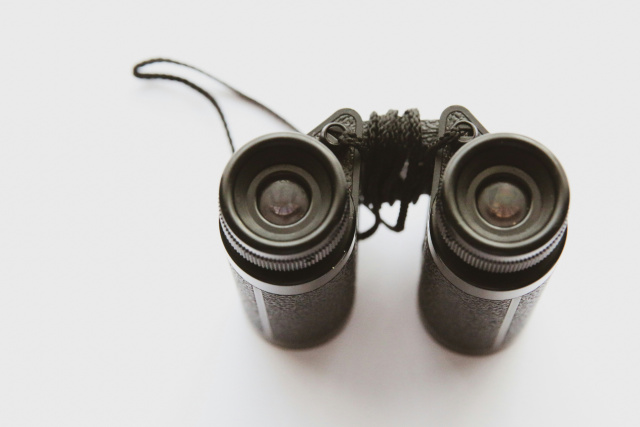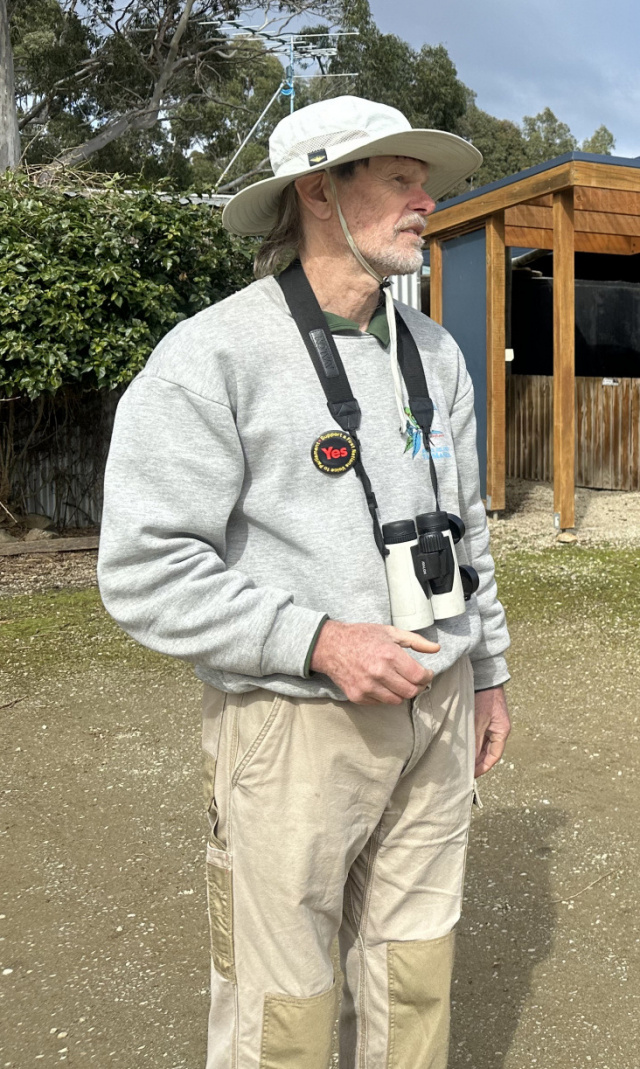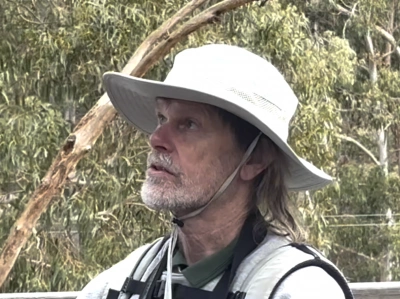So I got into looking at birds as a kid and bought my first pair of second-hand binoculars when I was 10, from money that I'd gathered together by picking up discarded beer bottles on the side of the East Tamar Highway and selling them for 10 cents a dozen. I would walk along the highway with a big bag, collect up all the beer bottles and bring them back, and eventually got $10 together to buy my first pair of binoculars.
Then I used to go out very early each morning and look at birds.
Currently, I’m a tour guide at Inala Nature Tours, which I have been for the last 11 years. I’m also manager for a project that's being run by the Bruny Island Environment Network, called the Threatened Woodland Birds of Bruny Island.

So developing a passion for nature in future generations is key to the ongoing survival of anything here that's going to need some help.
And when kids are young, that's when they're sponges, they're ready to take on new stuff. That's when I developed my passion for this, and if I can pass that on to a few others in their early years of life, then that's a fantastic thing, and hopefully they'll carry on when I'm not able to do it anymore!
The kids on Bruny Island are a fantastic bunch. They're so switched on and really aware of what's around them. I’m really hopeful seeing kids like that growing up on Bruny that they'll take care of this place when I'm not able to do it anymore.
Kids are the future. We’re not going to be here forever, and they're the ones who are going to be caring for this place after we’re gone.

So I got into looking at birds as a kid and bought my first pair of second-hand binoculars when I was 10, from money that I'd gathered together by picking up discarded beer bottles on the side of the East Tamar Highway and selling them for 10 cents a dozen. I would walk along the highway with a big bag, collect up all the beer bottles and bring them back, and eventually got $10 together to buy my first pair of binoculars.
Then I used to go out very early each morning and look at birds.
Currently, I’m a tour guide at Inala Nature Tours, which I have been for the last 11 years. I’m also manager for a project that's being run by the Bruny Island Environment Network, called the Threatened Woodland Birds of Bruny Island.

So developing a passion for nature in future generations is key to the ongoing survival of anything here that's going to need some help.
And when kids are young, that's when they're sponges, they're ready to take on new stuff. That's when I developed my passion for this, and if I can pass that on to a few others in their early years of life, then that's a fantastic thing, and hopefully they'll carry on when I'm not able to do it anymore!
The kids on Bruny Island are a fantastic bunch. They're so switched on and really aware of what's around them. I’m really hopeful seeing kids like that growing up on Bruny that they'll take care of this place when I'm not able to do it anymore.
Kids are the future. We’re not going to be here forever, and they're the ones who are going to be caring for this place after we’re gone.

You might like...

A rakali, an Aurora, and Bruny

A place for city dwellers to breathe

Love of Bruny

Bruny and Maria Island critical for Swift Parrot's survival
Newsletter
Sign up to keep in touch with articles, updates, events or news from Kuno, your platform for nature

